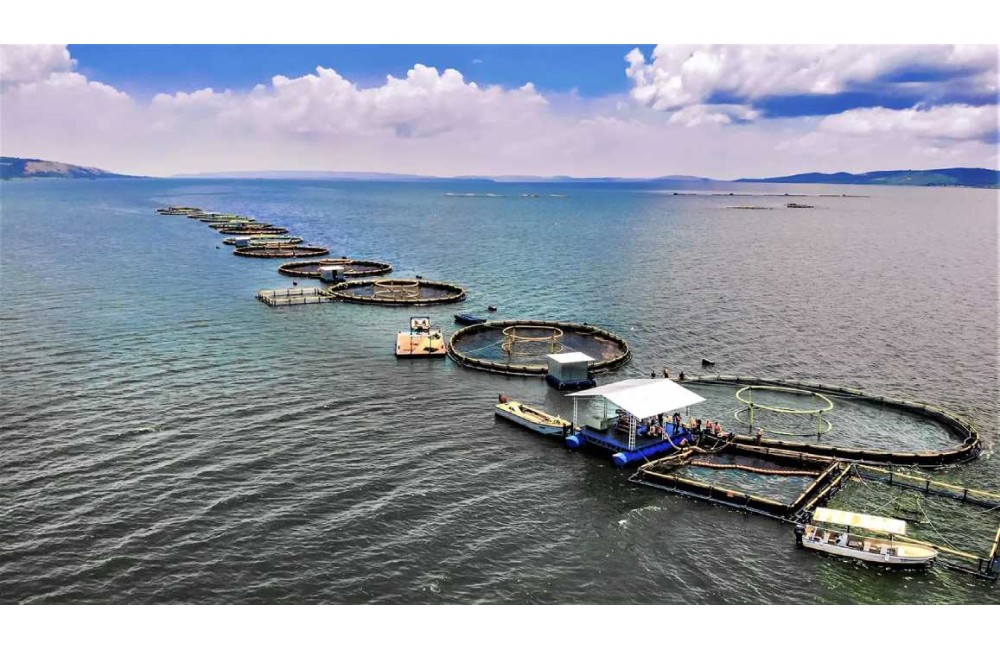
Seeding the Future: Aquafarms Get Smart
India's coastline and freshwater resources have nurtured a thriving
aquaculture industry. This sector, fueled by rising demand for seafood, has
grown at an impressive 8% annually since 2015. In 2022, seafood exports hit a
record $7.08 billion, showcasing the immense potential.
Dominant Species and Government Support
Fish and shrimp are the mainstays of Indian aquaculture. Shrimp production
has skyrocketed by 10% annually, reaching 700,000 metric tonnes in 2022. Fish
production has grown at 8% annually, reaching 1.2 million metric tonnes the
same year.
The Indian government actively supports this growth. The National Fisheries
Development Board (NFDB) and the Marine Products Export Development Authority
(MPEDA) provide financial aid and supportive policies. Significant funding has
been allocated for infrastructure development and technology adoption. The Blue
Revolution Scheme, launched in 2022-2023 with a budget of INR 1,800 Cr,
exemplifies the government's commitment to sustainable development in fisheries
and aquaculture.
Tech Revolutionizes Aquaculture
Technology is transforming Indian aquaculture. Traditional practices are
giving way to modern farm management systems, significantly improving
productivity and sustainability. Over 60% of farmers have adopted
technology-driven practices, resulting in a 25-30% yield increase and a 10-15%
reduction in feed conversion ratios (CII survey).
Data-Driven Approach for Better Decisions
Data analytics plays a crucial role. IoT devices and sensors deployed in
farms collect real-time data on water quality, oxygen levels, and feed
management. Analyzing this data empowers farmers to proactively prevent disease
outbreaks, optimize feed utilization, and gain valuable insights into fish or
shrimp health. This data-driven approach not only reduces production risks but
also leads to substantial cost savings.
AI and ML Shaping the Future
The integration of data analytics with artificial intelligence (AI) and
machine learning (ML) is revolutionizing aquaculture practices. AI-powered
systems, coupled with extensive data analysis, enable farmers to make informed
decisions and predict market trends. A study by the Indian Council of
Agricultural Research (ICAR) found that implementing AI algorithms in disease
detection resulted in a 40% reduction in disease-related losses, saving farmers
an estimated INR 500 Cr annually.
Innovative Methods for Sustainable Practices
Recirculating aquaculture systems (RAS) are gaining popularity due to their
ability to maintain optimal water conditions while minimizing water usage.
These systems utilize advanced filtration and water treatment mechanisms. The
MPEDA reports a 35% increase in RAS adoption over the past three years,
contributing to improved water management and a reduction of up to 90% in water
consumption compared to traditional pond-based systems.
Genetics for Enhanced Productivity
Selective breeding and genetic engineering techniques are playing a pivotal
role in improving the quality and productivity of aquaculture species. The NFDB
highlights a 20% increase in the adoption of genetically improved fish
varieties over the past five years. These advancements have led to the
development of disease-resistant, fast-growing, and high-yielding fish varieties,
significantly improving production efficiency and profitability for farmers.
A Diversifying Export Portfolio
The growth in fish and shrimp production has significantly impacted India's
seafood exports. In 2022, India exported approximately 1.48 million metric
tonnes of seafood, valued at $7.08 billion. Shrimp exports, valued at $4.6
billion, constitute a major portion of this total. Technology-driven practices
and efficient supply chain management ensure high-quality seafood reaches
global markets.
India's aquaculture industry is strategically moving beyond shrimp. Fish
exports have witnessed a steady rise, with popular varieties like Indian
mackerel and tuna finding growing demand internationally. Advanced technologies
in fish breeding, processing, and preservation are helping maintain product
quality and freshness.
The Future: Embracing Technology for Sustainability
Technology integration throughout the aquaculture value chain has been
instrumental in propelling India's seafood exports and ensuring sustainable
practices. By embracing continued technological advancements, India can
solidify its position as a global leader in aquaculture, boost domestic
production, meet rising consumer demand, and contribute to food security.
